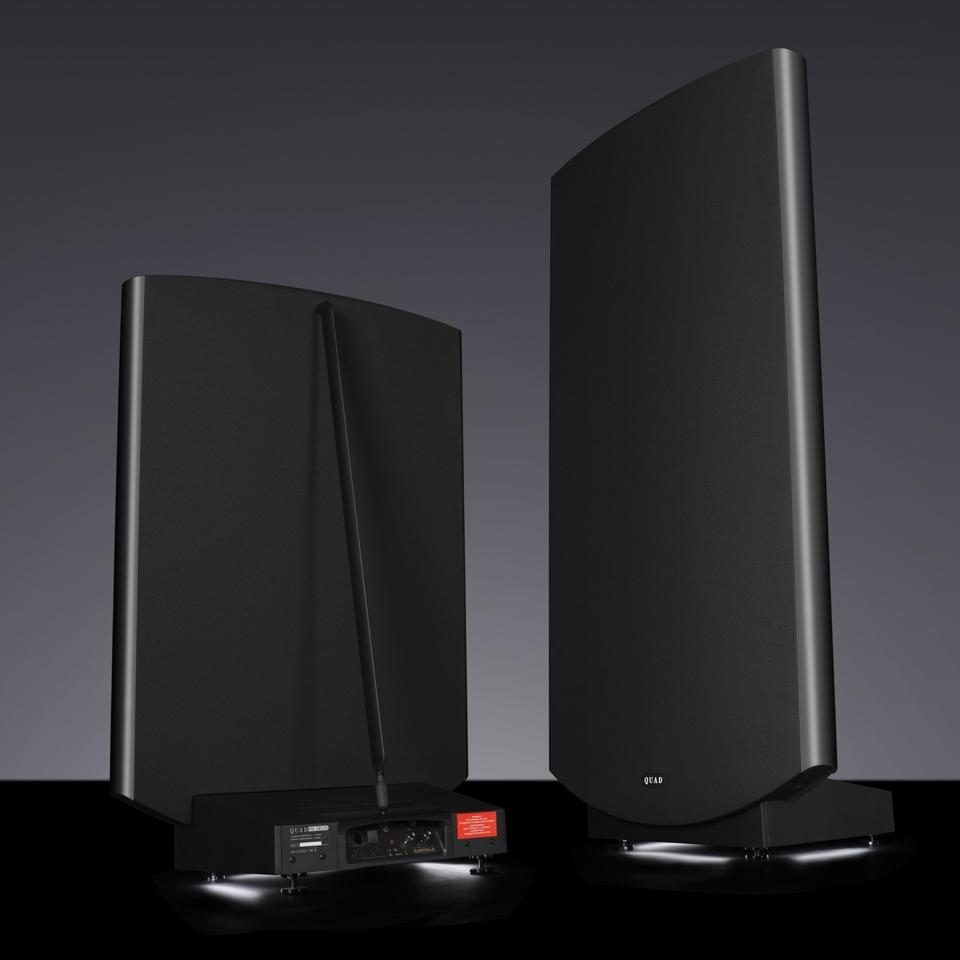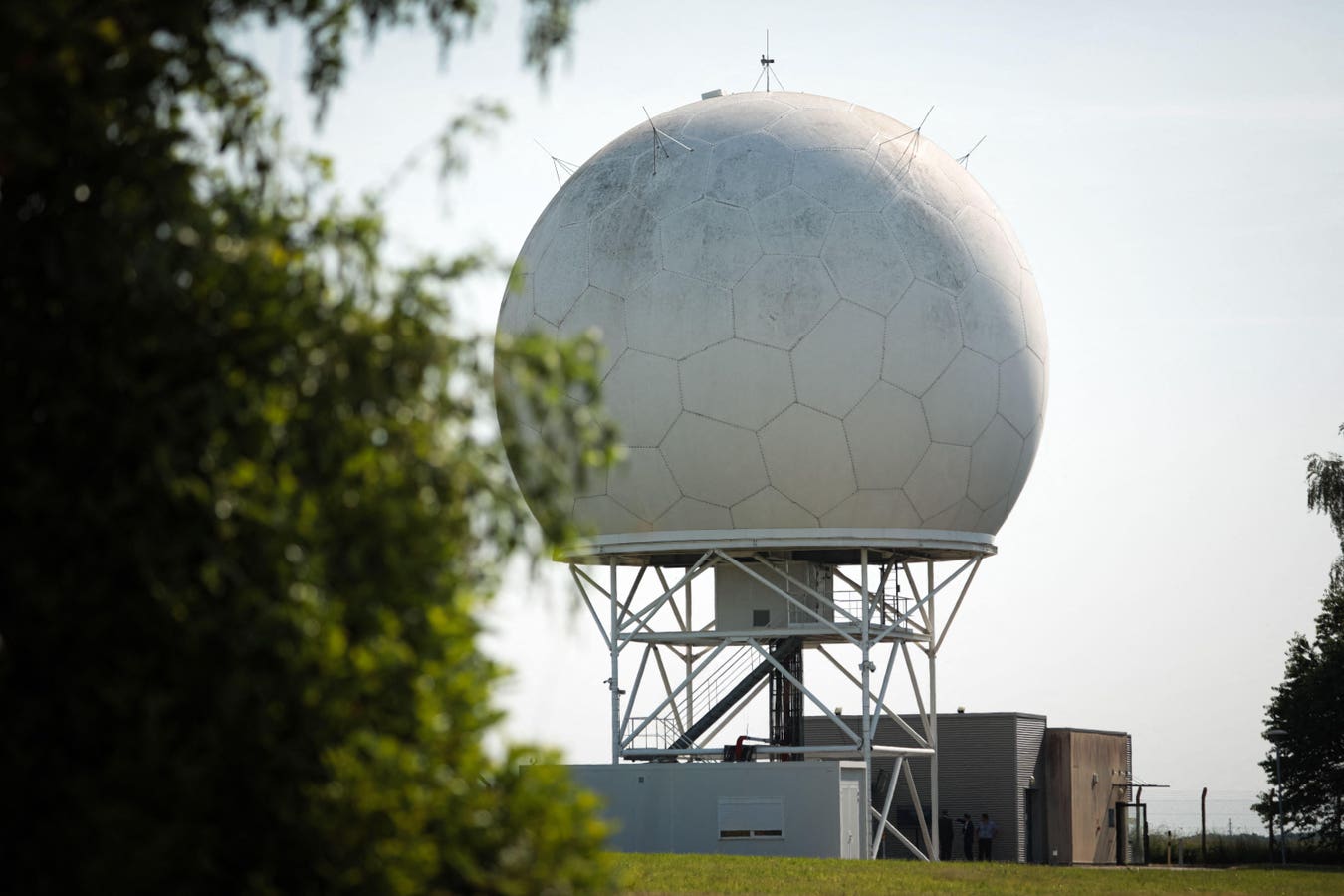The new QUAD ESL 2812X are 107cm high, while the ESL 2912X are 40cm taller. They are finished in a … More
One of the most exciting audio brands for me at the moment is QUAD. It’s also one of the oldest audio brands. When I was a music-mad teenager, I longed to own some QUAD gear and it’s good to see the brand is thriving and still drawing on its classic heritage for inspiration in our digital age.
Back in the 1960s and 1970s, QUAD was the “go-to” name for high-end hi-fi and it blazed a technological trail that still influencing the industry today. Now QUAD has announced a new version of one of the most lauded loudspeaker designs of all time: the ESL electrostatic speakers.
Originally developed by QUAD’s founder, Peter Walker, the ESL was the world’s first full-range electrostatic speaker when it was launched in the 1950s. Walker changed people’s perception of how good a hi-fi loudspeaker could sound. Fo 70 years, Britain’s original high-end audio brand has continued refining Walker’s original design with successive iterations of the most distinctive speaker ever made. The QUAD ESL has been loved, respected and admired globally for decades and is often cited by audio critics and hi-fi aficionados as one of the greatest hi-fi products ever made.
QUAD’s Founder Peter Walker was responsible for inventing the world’s first full-range electrostatic … More
A Sixth Generation Of ESL
QUAD has only produced five generations of the ESL since its original launch in 1957. The first model was superseded by the ESL 63 in 1981. That design was updated in 1999 with the ESL 988 and ESL 989. This was the first time a new ESL generation was split into two different models. The 988 was a similar size to previous ESL, while the 989 was larger. The two models were eventually replaced by the ESL 2805 and ESL 2905 in 2006, followed by the ESL 2812 and ESL 2912 in 2012.
It’s been 13 years since the last revision of the ESL and now the sixth generation is launching as the new ESL 2812X and ESL 2912X. The new speakers are the result of an extensive review of the design and manufacturing processes. The two new models have upgraded electrostatic panels and operational electronics, together with redesigned audio transformers and a new stealth look.
QUAD says the sonic benefits and long-term reliability made possible by these upgrades will ensure these are the best QUAD ESLs it has ever produced and they are capable of ”“sonic transparency, clarity, dexterity and openness.” The designers say the musical performance of the new ESL expands in front of the listener as if they were at a live event, free from the constraints of conventional loudspeaker drivers and cabinets. It’s the perfect exemplar of the benefits of electrostatic technology.
The original QUAD ESL Electrostatic speakers were a breath of fresh air in speaker design.
Electrostatic Advantage
Most loudspeakers generate sound waves using dynamic drive units with a conical or dome-shaped diaphragm. The diaphragm moves back and forth in response to an audio signal by a coil in a magnetic field. Electrostatic speakers replace these principles with ultra-thin and panel-shaped diaphragms which are electrically charged and suspended in an electrostatic field that generates movement.
At the heart of a QUAD ESL speaker are the electrostatic panels with a diaphragm made of fine Mylar film, which is ten times thinner than a human hair. The Mylar film is coated with a high-resistance conductive material and suspended between two perforated metal plates called stators. The diaphragm is incredibly light and dynamically responsive. It’s also much lighter than any moving-coil driver cone and that means it can respond to signal transients with greater speed and accuracy.
The Mylar diaphragm is charged up to a constant high voltage in excess of 5.2kV DC. An audio signal is applied across the two stators to create an alternating electric field, which causes the charged electrostatic Mylar diaphragm to be pushed and pulled towards them. The diaphragm vibrates in response to the music signal and produces the ultra-pure sound for which QUAD ESL speakers are renowned.
Because the Mylar diaphragm is so light and uniform, the sound it generates is described as exceptionally clean with the ability to respond accurately to musical transients. It has very low distortion levels, particularly intermodulation distortion, especially in the midrange frequencies where human hearing is concentrated.
The new finish of the latest generation of ESL speakers eschews gimmicks in favor of engineering and … More
Full Range Electrostatics
When QUAD introduced its first full-range electrostatic speaker in 1957, it “opened a sonic window” by offering unrivalled transient response and transparency with vanishingly low distortion and no cone driver hangover. There is also none of the colorations you get with a traditional speaker cabinet. However, the bass extension of the ESL was limited along with the dynamic range. Whether it was your ideal speaker depended on which aspects of sound reproduction you valued most as a listener.
Since those early days, several companies have tried to blend the best aspects of electrostatic panels for their superior mid and upper frequencies with moving-coil drivers for a deep bass. Bringing these different speaker technologies together in a seamless way has been challenging. Some companies have managed it with headphones and IEMs, but nothing has been able to match the clarity of a full-range electrostatic speaker.
QUAD ESLs have always been full-range electrostatic speakers, but with each new generation, the company capitalized on the unique sonic advantages of the electrostatic transducer technology invented by Peter Walker, while overcoming its drawbacks. QUAD says its new ESL 2812X and ESL 2912X are the ultimate realization of electrostatic technology.
The panel and electronics of the new generation ESL speakers have been completely overhauled by … More
Since the groundbreaking ESL 63, electrostatic panels that can handle higher audio frequencies have been configured with a concentric ring electrode design. Rather than allowing all sections of the diaphragm to move uniformly, the speakers were engineered to ensure that the audio signal appears to emanate from a singular point in space.
This arrangement produces a precise stereo image with instruments and vocal performances appearing to hover in the room. This point-source characteristic is helped by an innovative delay line system that supplies the outer rings of the stators with gradually delayed iterations of the audio signal.
High Voltage Sound
Another critical factor influencing the performance of QUAD ESL speakers is their high operating voltage, which is approximately 5,250V. This voltage enhances the diaphragm’s control and linearity, enabling it to move in response to musical signals without distorting. The high voltage is regulated by a multiplier circuit that amplifies standard AC power alongside a protective circuit that prevents overdriving, safeguarding the speaker from potential damage and distorted sound.
The QUAD ESL 2912X have an imposing presence but are designed to melt away in low light.
The new ESL Generation X concept began in 2019 as part of an extensive review of QUAD’s electrostatic manufacturing facility. Under the leadership of Paul McConville, every aspect of the design and the manufacturing process was re-evaluated and refined to improve the quality and precision of the loudspeaker assembly.
Using techniques like advanced laser-precision metrology, QUAD reviewed the foundation of the ESL design. Enhancements were implemented in the processes of spraying, etching, tensioning and assembly to ensure peak performance. Upgrades were applied to both the passive and active components, enhancing the overall integrity of the existing ESL 2812 and ESL 2912 models.
The review process highlighted several areas that could be improved although there was no need for a radical reinvention. Instead, they built on existing frameworks with an incremental improvement instead of a complete overhaul. Aside from a few aesthetic changes, the new ESL X speakers look very much like their predecessors in both shape and size.
New Look And Design
Both new ESL speakers are broader than regular boxy speakers, but they have a slimmer side profile thanks to the electrostatic panels. The ESL 2812X measure 107cm high, while the ESL 2912X are 40cm taller. The first model has four electrostatic panels, while the larger version has six. Both models have the same sonic attributes, but the taller ESL 2912X generates greater scale and is suitable for larger rooms.
The performance of the new ESL X models has been improved in three key areas. Firstly, the electrostatic panels are technically the same design as their predecessors, but have been improved with refinements in the manufacturing process. These changes have increased the time it takes to build each panel, but QUAD claims they have enabled the panels to achieve their full performance potential.
The traditional wood trims have been removed to modernize the design, enabling the ESL 2812X and ESL … More
Alongside the panel improvements, the operational electronics have been split from a monolithic PCB design into three independent modules. The system consists of a high-voltage multiplier module, a control and protection module, plus a low-voltage signal module. Together, these three modules form an integrated unit for optimal performance and reliability.
By physically separating the 5.25kV multiplier stage from the sensitive low-voltage circuits, QUAD has significantly reduced stray high-voltage electric fields. This isolation minimizes interference and crosstalk, as well as enhancing stability and noise performance, boosting the clarity of audio signals so that more nuances are revealed, even during powerful musical peaks.
Made In The U.K.
The audio transformers are essential to an electrostatic speaker’s performance and the new ESL X models have an improved design that’s made in the UK. The design was refined and supervised in quality control by QUAD’s service team led by Rob Flain. The new transformers have been engineered to improve signal dynamics, particularly within the middle and high frequency ranges, enhancing detail. The wide bandwidth ensures a flat response extending to beyond 18kHz.
With robust voltage regulation in place, the transformers effectively eliminate flux modulation artefacts when operating at high sound pressure levels. The sonic benefits include enhanced mid/high-frequency dynamics, sharper transient attacks and increased soundstage depth with better resolution of micro-dynamics.
When he created the QUAD ESL speakers, Peter Walker’s goal was not to produce a technical novelty for its own sake. He wanted to ensure that listeners experienced music just as it was intended—faithfully, honestly and without the speaker imprinting its character on the sound. He described the perfect audio system as one that would leave the listener uncertain whether the sound they were hearing was live or reproduced.
The overall effect of the new ESL 2812X has been enhanced by a new grille cloth, chosen to match the … More
The low-reflection stealth matt black finish applied to the new ESL X models sees the traditional wood trims removed to modernize and update the design, enabling the ESL 2812X and ESL 2912X to blend in with their surroundings, ensuring they almost fade away under low-light conditions.
The new finish eschews gimmicks in favor of engineering and simplicity. However, for those open to subtle embellishment, there’s a new LED Halo lighting effect (which can be dimmed or switched off) that illuminates the speakers from underneath, giving the impression they are floating above the floor. The overall look is enhanced by a new grille cloth that’s been chosen to match the matt black finish of the speakers and offers better acoustic transparency.
Pricing and Availability:
The QUAD ESL 2812X and ESL 2912X electrostatic speakers will be available from mid-August 2025. The ESL 2812X are priced at $14,995 / £10,999 / €13.999 per pair and the ESL 2912X ar epriced $17,995 / £12,999 / €16.999 per pair.
Tech Specs:
QUAD ESL 2812X
- Format: Floor-standing dipole with 3-degree fixed tilt.
- Type: Multiple electrostatic drive membranes.
- Point-source time delay: Progressive concentric rings.
- Chassis structure: Heavy-duty composite aluminium/steel.
- Panel elements: 4.
- Maximum output: 2N/m2 at 2m on axis.
- Sensitivity: 1.5 mbar per volt referred to 1m (86dB/2.83V RMS equivalent).
- Nominal impedance: 8Ω (impedance variation 4-15Ω).
- Maximum input: Continuous input voltage (RMS): 10V / Programme peak for undistorted output: 40V / Permitted peak input: 55V.
- Frequency response: 37Hz-21kHz (-6dB); 33Hz-23kHz (usable).
- Distortion (100dB@1m): Above 1000Hz: <0.15% / Above 100Hz: <0.5 / Above 50Hz: <1.0%.
- Power consumption: 8W.
- Dimensions (HxWxD): 107 x 69 x 38cm.
- Net weight: 35kg.
QUAD ESL 2912X
- Format: Floor-standing dipole with 3-degree fixed tilt.
- Type: Multiple electrostatic drive membranes.
- Point-source time delay: Progressive concentric rings.
- Chassis structure: Heavy-duty composite aluminium/steel.
- Panel elements: 6.
- Maximum output: 2N/m2 at 2m on axis.
- Sensitivity: 1.5 mbar per volt referred to 1m (86dB/2.83V RMS equivalent).
- Nominal impedance: 8Ω (impedance variation 4-15Ω).
- Maximum input: Continuous input voltage (RMS): 10V / Programme peak for undistorted output: 40V / Permitted peak input: 55V.
- Frequency response: 32Hz-21kHz (-6dB); 28Hz-23kHz (usable).
- Distortion (100dB@1m): Above 1000Hz: <0.15% / Above 100Hz: <0.5 / Above 50Hz: <1.0%.
- Power consumption: 8W.
- Dimensions (HxWxD): 147 x 69 x 38cm.
- Net weight: 44kg.









